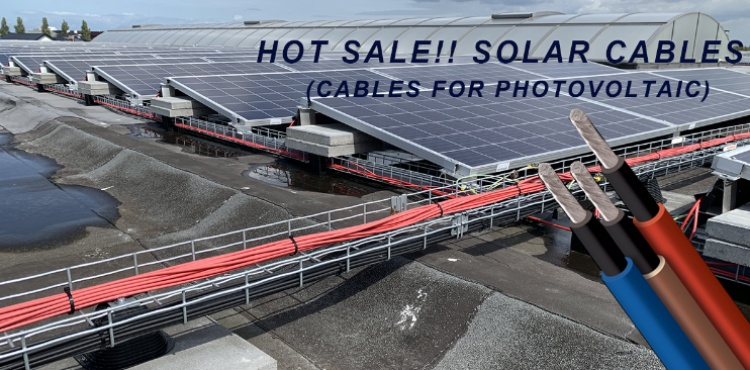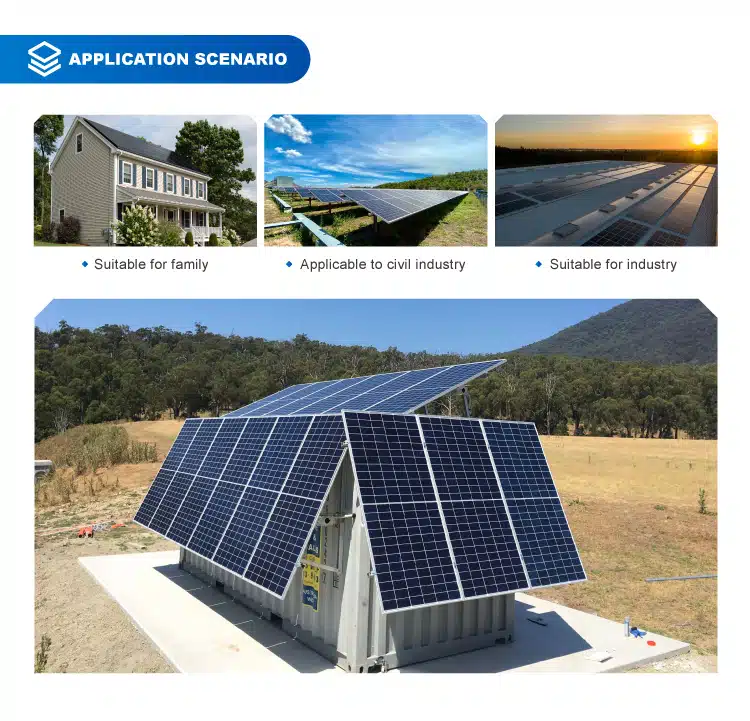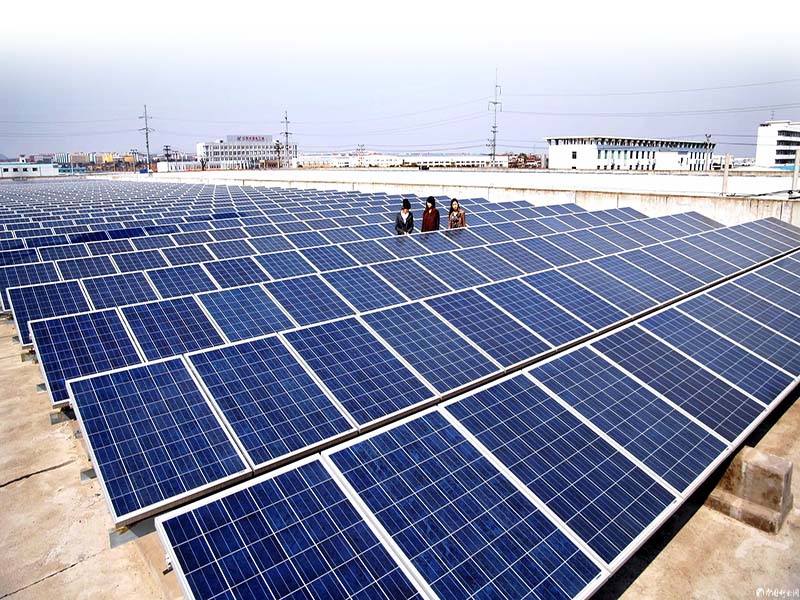
How does solar photovoltaic power generation system work?
2023-12-22Solar photovoltaic power generation systems can be divided into two categories: off-grid (independent) photovoltaic power generation systems and grid-connected photovoltaic power generation systems.

The core component of solar photovoltaic power generation is the solar cell module, which converts the light energy of sunlight directly into electrical energy, and stores the electrical energy generated by the battery module in the battery through the photovoltaic controller. When the load uses electricity, the electric energy in the battery is reasonably distributed to each load through the photovoltaic controller. The current generated by the battery component is direct current, which can be directly applied in the form of direct current, or it can be converted into alternating current by an AC inverter for use by the AC load. The electric energy generated by solar energy can be used immediately, or it can be stored in energy storage devices such as batteries and used when needed.
Off-grid photovoltaic power generation systems are suitable for the following situations and occasions: ① require mobile power supply for equipment; ② remote areas, agricultural, forestry and pastoral areas, mountainous areas, and islands far away from the power grid; ③ occasions that do not need to be connected to the grid; ④ occasions that do not require backup power supply, etc. . Generally speaking, in places that are far away from the power grid and require power supply, as well as in places such as diesel power generation that require transportation of fuel and high power generation costs, the use of off-grid photovoltaic power generation systems is more economical and environmentally friendly, and can be given priority. In some occasions, in order to ensure the stability, continuity and reliability of off-grid power supply, it is often necessary to use diesel generators, wind turbines, etc. to form a complementary power generation system with photovoltaic power generation systems.
Solar Panel Display
The grid-connected photovoltaic power generation system converts light energy into electrical energy through a square array of battery modules, and enters the grid-connected inverter through the DC combiner box and DC distribution cabinet. Some types of grid-connected photovoltaic power generation systems also need to be equipped with energy storage systems to store electrical energy. . The grid-connected photovoltaic inverter consists of power regulation, AC inverter, grid-connected protection switching and other parts. The AC power output by the inverter passes through the AC distribution cabinet for use by users or loads. The excess power can be fed back into the public grid through power transformers and other equipment (which can be called selling electricity). When the grid-connected photovoltaic power generation system generates insufficient power due to climate reasons or its own power consumption is too high, the public grid can supplement power supply to user loads (called power purchase). The system is also equipped with monitoring, testing and display systems, which are used to monitor and detect the working status of the entire system and collect statistics on various data such as power generation. The computer network system can also be used to remotely control and display data.
The grid-connected photovoltaic power generation system can provide countercurrent power to the public grid. Its “day and night” power generation characteristics can adjust the peak and valley of the public grid, which is very beneficial to enhancing the stability and reliability of power supply. Compared with off-grid photovoltaic power generation systems, energy storage equipment is not required (except for special occasions), thus expanding the scope of use and flexibility, and greatly reducing the cost of the power generation system. For grid-connected photovoltaic power generation systems with energy storage systems, the photovoltaic inverter will contain charge and discharge control functions, which are responsible for regulating, controlling and protecting the normal operation of the energy storage system.
